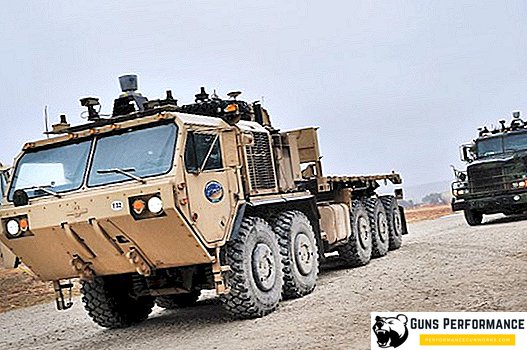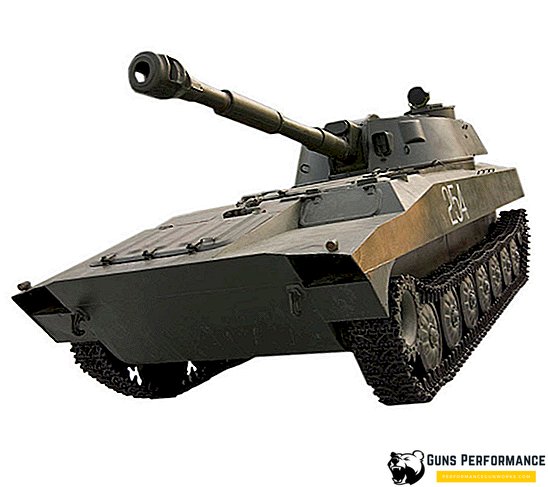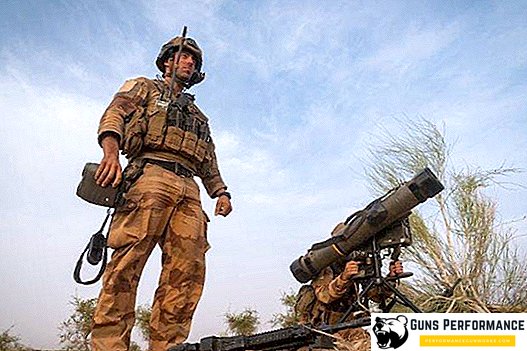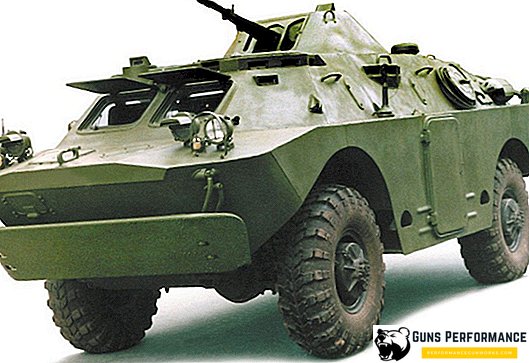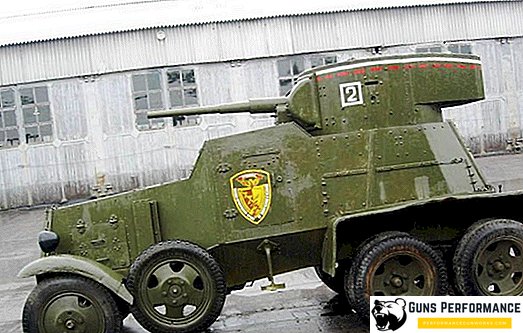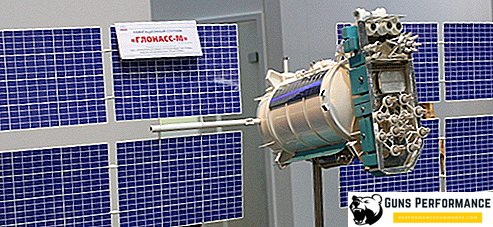For nearly 30 years, Soviet nuclear-powered missile carriers successfully resisted the nuclear potential of Western countries, playing the role of a reliable element of deterrence. The nuclear submarine armed with ballistic missiles was, is and will be the most powerful weapon in the modern era. Due to the great destructive power and perfect equipment, submarine missile carriers are the most sophisticated warships that have ever descended from the stocks. The Soviet Union could be proud of its achievements in the construction of nuclear submarines. Today, the rich traditions of Soviet submariners, all the vast experience gained in the construction of ships of this class, are successfully used in practice by Russian submariners. The combat service of submarines of the 667bdrm type "Dolphin" is a clear confirmation of this. The Novomoskovsk missile submarine cruisers, Yekaterinburg and Verkhoturye continue to maintain combat duty as part of the Northern Fleet.

Seven nuclear submarines of the "Dolphin" type are the basis of the naval component of Russia's nuclear triad at the moment. These ships are direct descendants of Project 667 nuclear submarines, which were the most popular in the Soviet fleet.
Old, new project 667BRDM type "Dolphin"
The collapse of the Soviet Union left the Russian Navy a rich legacy. A huge nuclear submarine fleet stood in the bays of the Northern Fleet and was located in the basing places in the Far East. Soviet nuclear submarines had different ages and were differently prepared for further continuation of service. Of all the types and classes of submarines, nuclear submarines of the 667BRDM type "Dolphin" are the best preserved. It was on these ships that the emphasis was placed on the future maintenance of the combat readiness of Russian naval nuclear forces.

It should immediately be said that this project was a hodgepodge, which included the best design practices in the construction of project 667 ships. As before, Rubin Central Design Bureau, the flagship of the national nuclear submarine shipbuilding, was engaged in the development of an improved project.
Delphine ships were to be the final version of the 667 project, marking the transition from 2nd generation nuclear submarines to 3rd generation submarines. According to the Soviet classification, boats of this type belonged to the class of missile submarines, respectively, and the type of ships was designated as SSBN (strategic missile submarine). The development of an improved project began back in 1975, when the US Navy began to develop the design of a new nuclear submarine of the Ohio type. In the new American submarine was planned to place 24 ballistic missiles "Trident-II".
The atomic missile carriers that were at that time in the USSR Navy were armed with a smaller number of strategic missiles. In view of the current situation and to create parity with the Americans in terms of the number of nuclear carriers, it was decided to create a more powerful ship for the fleet. The submarines of the Kalmar 667БДR project became the basic basis for the new Soviet submarines. In the design of the new submarine, it was decided to increase everything and significantly improve the navigation characteristics of the underwater vessel. The ships were designed for the installation of new Soviet strategic missiles R-29RM, so it was necessary to increase the size of the ship. The bow and stern tips of the submarine increased accordingly.
In the design process, attempts were made to reduce the noise of the ship and to make the sonar picture of the submarine less noticeable. Many systems on the project of the 667BDRM were used for the first time, including the new sonar equipment. The result of the work of designers was almost a new project, which marked the beginning of a new final series of Soviet nuclear missile carriers, consisting of 7 ships.
The design of the nuclear submarine Project 667 BDRM
The lead ship of the series, the nuclear submarine B-51 Verkhoturye, was laid on holiday, February 23, 1981. For the construction of ships of this project was chosen the main enterprise of the Soviet atomic shipbuilding - Severodvinsk engineering plant Sevmash. Within 9 years, from 1981 to 1990, the company launched and commissioned 7 ships of the project 667BDRM. The last ship of this series was the SS-K-407 Novomoskovsk.
Submarine missile carrier "Verkhotur'e" received a pronounced hump, which housed 16 ballistic missiles. In the NATO classification, the ship received the code "Delta-IV", continuing with a number of combat ships under the code Delta. The size of the submarine is impressive. The length of the hull was 167 m, and the displacement increased to 11,740 tons. The atomic submarine had a double-hull design that became traditional for ships of the previous series. The durable main body of the ship and the bulkheads were made of durable steel, capable of withstanding long-term intensive loads and possessing anti-corrosion properties. The design of the ship and the strength characteristics of the materials allowed the boat to sink to a depth of 600 m.

The main components and assemblies of the underwater ship were placed on special depreciation platforms that reduce vibration and acoustic noise. Compartments with the power plant had local sound absorbers. The lightweight hull was covered with a masking material specially designed for this purpose, providing a smaller sonar background of the ship. A distinctive feature of the submarine project 667BDRM steel propellers, which had five blades, and had an improved sonar picture.
Such events and innovations have significantly increased the stealth of the ship, bringing the sonar parameters of the Soviet submarine closer to the parameters of the American Ohio-class missile carrier.
During the military campaigns, the Soviet missile submarine cruisers Yekaterinburg and Moscow Region managed to remain unnoticed by NATO ships for more than a week at sea. This was the reason that the American submarines were forced to approach the permanent bases of Soviet submarines, putting themselves at great risk of being discovered.
All ships of the project received the Omnibus-BDRM automated weapons management system, which was used to analyze the incoming information, determine the parameters of the combat use of tactical weapons. In addition, the boats were equipped with new sonar equipment "Skat", having two antennas. One antenna was located in the nose fairing, the second - was used in towed version. Missile armament had an improved navigation system "Gateway", which allows to determine the location of the boat with high accuracy during the launch of missiles.
The main power plant for all submarines was the VM-4SG nuclear reactor, which provided steam for two OK-700A turbines. The total power of the propulsion system was 60 thousand liters. with. 225 hp electric motors were used as backup engines on ships. each. The nuclear installation provided ships with an underwater course at a speed of 24 knots.
In contrast to the ships of the early series on the "dolphins", the conditions of the personnel improved significantly, ensuring a comfortable performance of service during long and distant combat campaigns. The crew of the submarine in the state consisted of 140 people.
The firepower of the 667BDRM missile carriers
The ships were originally designed for the ballistic missile R-29RM. The D-9PM missile system installed on submarines was a launching pad for 16 strategic intercontinental missiles. The Soviet rocket had a significant technological advantage over its American counterparts. In terms of firing range and accuracy of hit with combat units, the R-29RM had no equal. Having smaller dimensions and take-off mass, the Soviet rocket could deliver nuclear charges over a distance of more than 8 thousand km.

This type of missile was the last in which liquid rocket engines were used. Further, all types of rocket weapons installed on domestic submarines, worked on solid fuel. Within five years, from 1996 to 2001, all ballistic missiles in service with 667BDRM submarines were replaced with the upgraded version, the R-29RMU2 missile. In consequence, the Russian dolphin-type missile carriers were reequipped to launch the R-29RMU2.1 Liner missiles. In 2011, the first underwater launch of a modernized missile was carried out with the Ekaterinburg missile system. Following these tests in the same year, the second intercontinental missile of this type was launched from the atomic submarine K-114 "Tula". The boats of the 667BDRM project could carry out a missile volley, being at a working depth of 55 m.
The tactical armament of submarine-type submarines of the Dolphin type was represented by four 533-mm torpedo tubes and the Waterfall anti-submarine torpedo-missile complex.
Nuclear missile submarine cruisers of the 667БДРМ project in the Russian fleet
All seven ships of this project were commissioned in the Soviet Union. At the time of the collapse of the USSR, these submarines remained the most modern and formed the backbone of the Russian Navy's nuclear forces. All ships were assigned to the Northern Fleet and were based at the Gadzhievo naval base. In the early 1990s, a government decision was made to support the 667BDRM missile carriers in combat, and with sufficient funding to carry out scheduled repairs and upgrades. The first submarine of the series was the first in 1993 to undergo scheduled repairs and upgrades, once again commissioning the Northern Fleet. On the remaining ships, starting in 1996, scheduled repairs and modernization were carried out alternately.

The nuclear submarine K-64 "Moscow region" was decommissioned in 1999. Modernization of the ship continued for a long 16 years. As a result, the boat was converted into an experimental test ship, capable of delivering ultra-small submarines. The ship received a new BS-64 number. The launch of the ship in the Northern Fleet took place in 2018. On the former missile carrier "Moscow region" the missile shafts were removed and a new compartment was installed to transport ultra-small submarines.
To date, all the ships are in service. A new stage of restoration of technical readiness of all ships is expected. The submarine K-117 "Bryansk" - the first of the ships of this class carried out the launch of an intercontinental missile at a short distance. In recent years, the ship has repeatedly performed training and combat launches of ballistic missiles in the waters of the Barents Sea.
Strategic missile submarine cruiser, the K-18 submarine made an ascent at the North Pole, setting the national flag of Russia and the Navy. In 1996, by the decision of the Commander-in-Chief of the Navy, the submarine received a new name "Karelia".
Eventually
All ships of the project 667BDRM remain at the moment in the Northern Fleet and are the most modern and efficient ships of the Russian fleet. Ships of this class have the necessary combat power, being an important component of the Russian nuclear triad. Six missile carriers alternately carry combat duty, while the Moscow Oblast submarine is involved in research programs and projects.
Being on alert, the Russian missile carriers create a lot of problems for the search teams of NATO countries. Good stealth and great autonomy provide these submarines with convenient launching points in the world ocean. The location of the 667BDRM missile carriers is mainly polar latitudes, where Russian submarines pose a constant real threat to a potential enemy.


